Researchers launch support hub for people with visible differences and their families
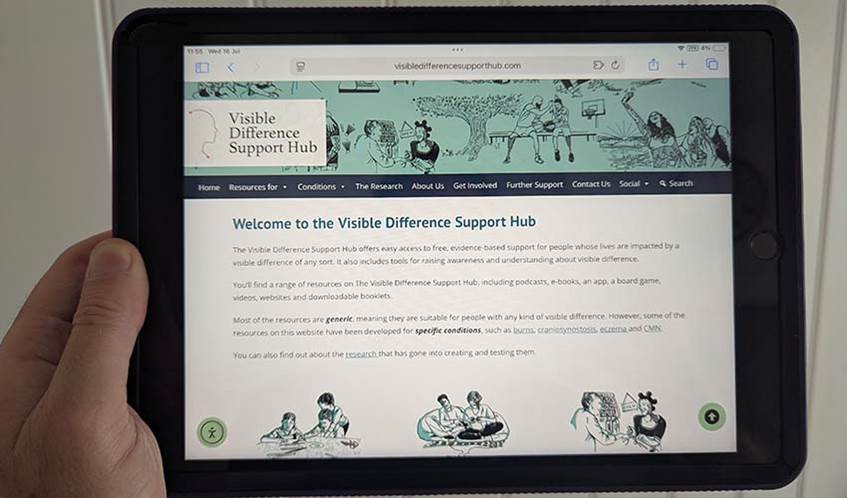
A first of its kind website offering evidence-based psychological support for people with visible differences and their families has been launched by university researchers.
Academics from the Centre for Appearance Research (CAR) at UWE Bristol collaborated with national charities to develop the free-to-access Visible Difference Support Hub, providing help for people with conditions, treatment, or injuries that affect how a person looks. This includes burn injuries, skin conditions, limb loss, craniofacial conditions, alopecia, scarring and many other differences in appearance.
More than 1.1 million people in the UK have a visible difference of some kind. Research by the team at CAR has explored the challenges often faced by people living with a visible difference in a society that seems obsessed with appearance, and led them to create resources to help.
The new website is a comprehensive collection of tried-and-tested resources that have been brought together to support people who might be struggling with problems such as other people’s reactions, bullying, or feeling self-conscious or nervous about new relationships. The resources come in a variety of formats, including an e-book, podcasts, videos, booklets and even a board game.
Based on years of robust research by the internationally recognised team of experts at CAR, the resources have been informed by input from people with lived experience of visible difference and well-established psychological principles. All 13 resources on the website have been rigorously evaluated to ensure they will benefit people living with a visible difference.
Diana Harcourt, Professor of Appearance and Health Psychology at CAR, said: “The psychological and social impact of a visible difference can be substantial, so we’re very pleased to be launching this unique website, offering support through a range of resources, free of charge, all of which are backed by scientific evidence.
“Much of the support currently available for people with visible differences and their families comes from wonderful but overstretched and under-resourced NHS teams and charities. That support hasn’t always been rigorously tested and isn’t always immediately available.
“Because of the research we’ve been doing, and because these resources available through the hub are based on solid psychological approaches, we can be confident that they are going to be helpful.
“I see it as helping people develop a toolbox of coping strategies. By making our resources easily available, we are putting more tools into their toolbox so there’s more chance that they’ll have something that can help them when they’re in a difficult situation.
“We hope the hub will make a real difference to people with visible differences and their families, and that it will also be useful to health professionals and teachers, and people who want to challenge negative attitudes towards visible difference.”
"Most of the resources we've created are generic - they could help people who have a skin condition, or who have lost a limb, or have a burn injury or scar. The challenges people face are often similar, regardless of the particular type of condition or injury they have."
Professor Diana Harcourt
The resources were created with input from an advisory group of representatives from 12 support organisations as well as health professionals. The website gives information about the research that has been conducted for each resource. More resources will be added to the website in the coming months and years.
Prof Harcourt said: “There are resources that people can access immediately, whether that’s a booklet to read, a video to watch, a podcast episode to listen to or an app to download.”
Dr Maia Thornton, a Senior Research Fellow in CAR who developed some of the resources on the website, said: “A good example of how the website could help is to think of a parent who’s awake in the night worrying about their child who has a visible difference - they probably can’t talk to another parent at that particular moment but they could go to the hub and find other people's experiences similar to their own or download booklets that can help them to manage their own worries, as well as support their child. The website makes support available at any time of day.”
Prof Harcourt added: “The website could also help someone who is on a waiting list to see a clinical psychologist. They could access the hub to get support in the meantime, while they're waiting to see the specialist. It could fill a gap, rather than leaving a person thinking there's nothing they can do.
“It could also help someone with a visible difference who is looking for a new job. Interviews are often stressful, but they can be particularly difficult for people with visible differences who might be worried they'll be judged because of how they look. They can go to the hub for support and to develop skills to build their confidence, which could help them manage that particular situation.”
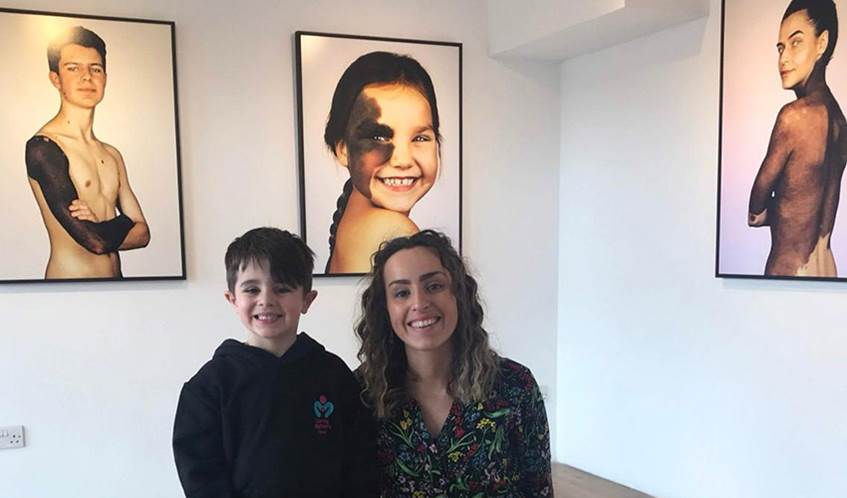
Many of the resources on the hub have been developed for people with any kind of visible difference, and their families, although there are also some resources specific to particular conditions such as burns, eczema or craniofacial conditions.
Prof Harcourt said: “Most of the resources we've created are generic - they could help people who have a skin condition, or who have lost a limb, or have a burn injury or scar. The challenges people face are often similar, regardless of the particular type of condition or injury they have. Typically, this includes managing other people's reactions such as staring, commenting or asking questions, receiving negative comments on social media, being worried about bullying at school or being concerned about romantic relationships. Those are common worries and concerns, regardless of the type of visible difference. We’d love people to explore the website and use the resources, which we hope will make a real difference to them.”
Hannah Cree, Head of Support at the charity Caring Matters Now, one of the support organisations that worked on the resources included in the hub, said: “Finally there is a place which hosts a breadth of research under one umbrella.
“This is an accessible, research-based resource which will benefit both members of the public and medical professionals, regardless of any prior knowledge and experience.”
Illustrations on the website were created by Abbi Bayliss, a former UWE Bristol student. The website development was funded by the university through a successful application to the Engagement & Impact Fund (2023-25). Several researchers from CAR were involved in the development of the hub, along with UWE Bristol colleagues Ana Ribiero and Neil Leonard.
The Visible Difference Support Hub website is available at www.VisibleDifferenceSupportHub.com
Related news

17 December 2025
Findings revealed from first UK study into experiences of mothers who are survivors of rape pregnancy
UWE Bristol academics have revealed the findings of the first UK-based study of the experiences of mothers who are survivors of rape pregnancy.

11 December 2025
Social media influencer work is far more demanding than it looks, research finds
A study exploring the mental health impacts of social media influencer work has revealed that life online is far more demanding than it appears.

25 November 2025
Health-tech start up MyCelsius launches breakthrough cooling tech for hot flushes developed at UWE Bristol’s Launch Space
A pioneering Bristol-based health-tech company developing cutting-edge cooling technology for hot flushes has credited UWE Bristol’s Launch Space incubator with playing a key role in accelerating its product development.

17 November 2025
Urgent reform needed to support ambulance-delivered end of life care, study finds
More than three quarters (78 per cent) of paramedics sometimes fear doing the wrong thing when caring for people in the last year of life, new research has found.

14 November 2025
Lecturer wins prestigious Times Higher Education award for innovation in teaching
A senior paramedic science lecturer at UWE Bristol has been named the most innovative teacher of the year in the Times Higher Education Awards 2025.

13 November 2025
Alliance Medical and UWE Bristol launch UK’s first PET-CT postgraduate certificate
In a move set to transform imaging education, Alliance Medical (AML) and UWE Bristol have joined forces to co-design and develop the UK’s first PET-CT Postgraduate Certificate (PG Cert).

17 July 2025
Want social change? A deeper understanding could be key, study suggests
New study suggests a deeper understanding of social change could help close the gap between challenges and actions, especially on issues like climate change.
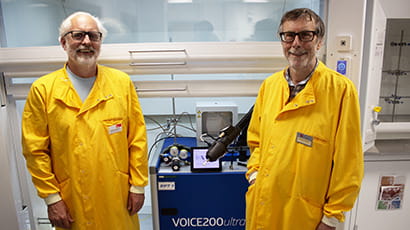
11 July 2025
Wound dressings developed with support from UWE Bristol to be launched by global firm
Technology that a team of UWE Bristol scientists helped develop to aid the healing of chronic wounds will be used in new ‘smart dressings’ being launched by global medical company.
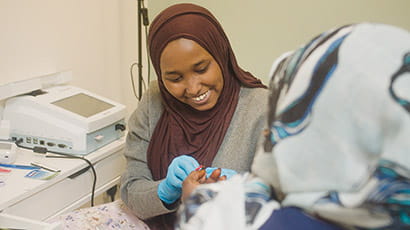
10 July 2025
Researcher awarded funding to develop digital health platform that connects people to local services
A UWE Bristol academic has received funding to develop an online platform that connects people to local community organisations offering health and social care support.
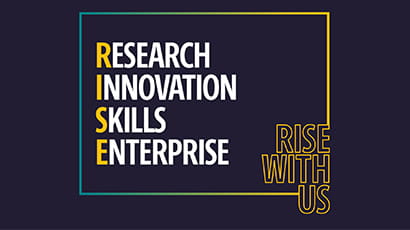
11 June 2025
Telling our story at UWE Bristol: RISE with us
UWE Bristol has launched RISE - standing for Research, Innovation, Skills and Enterprise - an institutional framework which shapes the University's purpose, culture and future growth.
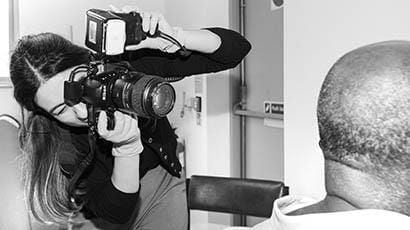
03 June 2025
Image library launched to address lack of diverse photography in healthcare
A new photo library has launched to address the shortage of images available showing health conditions on a range of skin tones.
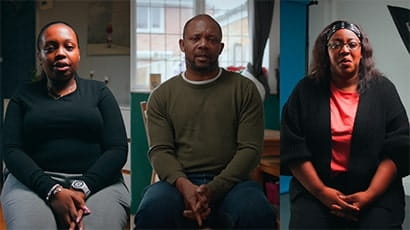
20 May 2025
Short films created to improve self-management by Black people living with stroke
Short films exploring Black people’s experiences of stroke have been released as outputs from a research project led by UWE Bristol and Kingston University.
You may also be interested in

Media enquiries
Enquiries related to news releases and press and contacts for the media team.
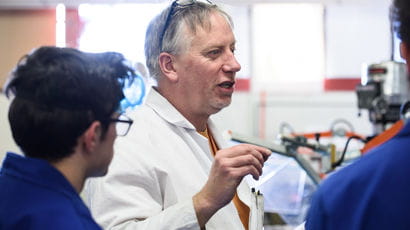
Find an expert
Media contacts are invited to check out the vast range of subjects where UWE Bristol can offer up expert commentary.

Centre for Appearance Research (CAR)
High-quality and innovative research that creates and promotes knowledge and understanding about the psychosocial and cultural aspects of appearance.

School of Social Sciences
If you want a career in social sciences, our inspiring courses will teach you to apply what you've learnt so you can start making a difference as soon as you graduate.






